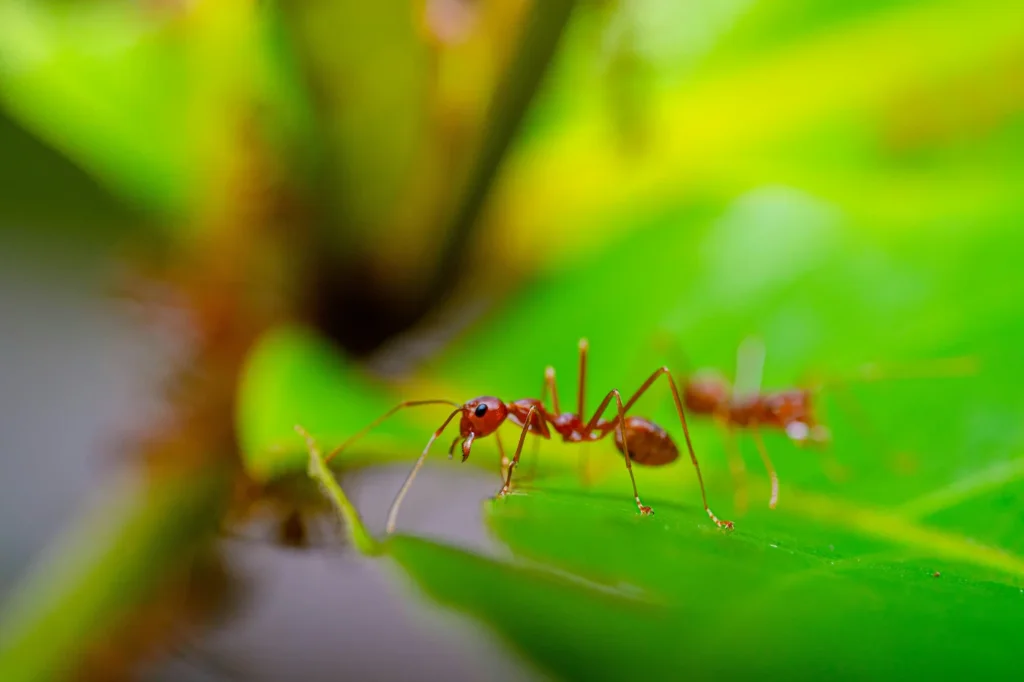
Everything You Need to Know About Fire Ants In NC
Dive into the world of fire ants, a significant pest challenge in urban environments. Known for their painful stings and aggressive nature, fire ants (Solenopsis invicta) are more than a mere nuisance; they pose real health risks and can damage property. This guide offers an insightful look into their behavior, impact, and the signs of infestation. We'll also explore effective strategies for managing these invasive pests. Whether you're dealing with an infestation or seeking preventive measures, our expert advice is here to help you tackle the fiery problem of the red imported fire ant.

Table of Contents
Understanding Fire Ants
Understanding these aspects is essential for effective control and prevention. From their distinct appearance to their unique social structures, this foundational knowledge will equip you with the insights needed to tackle fire ant infestations.
1. Physical Characteristics
Fire ants, are small but easily recognizable, they typically measure between 1/8 to 3/8 inches in length. Their bodies are a reddish-brown color, giving them the name 'fire ant' not only for their sting but also their appearance. They have segmented bodies typical of ants, with six legs and antennae.
2. Habitat and Behavior
Fire ants are highly adaptable and can thrive in a range of environments, although they prefer warm, sunny conditions. They are commonly found in open areas like lawns, parks, fields, and meadows. These ants are known for their aggressive behavior, especially when their nests, which appear as large mounds of dirt, are disturbed. Fire ants are highly territorial and will aggressively defend their colony.
3. Diet and Survival
The fire ant is omnivorous, feeding on plant material, insects, and small animals. They are also attracted to fatty or sweet food substances, often invading outdoor eating areas or kitchens in search of them. In terms of survival, fire ants are particularly resilient. They can quickly rebuild their colonies after floods or other disruptions, making them a persistent pest challenge.
The Impact of Fire Ant Infestations
Now, let's examine the risks and damages associated with fire ants. This section will detail the health hazards from their stings, the potential property damage they cause, and their broader environmental impact, highlighting why effective fire ant control is crucial
1. Painful Bites and Stings
Fire ants are notorious for their painful stings, which are not only uncomfortable but can also pose health risks. When disturbed, they can attack in large numbers, repeatedly stinging their perceived threat. The sting of a fire ant releases a venom that causes a burning sensation, leading to the development of itchy, red welts. In some cases, particularly for individuals with allergies, these stings can result in severe allergic reactions requiring medical attention.
2. Damage to Property and Environment
Beyond their health risks, the fire ant can cause significant damage to property and the environment. Their large mounds can ruin lawns and landscaping, and their nesting habits can damage agricultural crops. Fire ants also pose a threat to electrical equipment; they are known to chew on insulation and wiring, causing short circuits and damage to appliances, air conditioning units, and even traffic signal boxes.
3. Economic Impact
The economic impact of fire ant infestations is considerable. The costs associated with damage to property, agricultural losses, and control measures can be substantial. In areas heavily infested with fire ants, property values may decrease, and outdoor activities can be severely limited due to the risk of stings. The burden of managing these pests can be significant for homeowners, farmers, and local governments alike.
Identifying a Fire Ant Problem: Signs of Infestation
Detecting a fire ant infestation early is crucial for controlling it effectively. Here are some detailed indicators and common areas where fire ants are likely to infest:
1. Mound Nests
The most unmistakable sign of fire ants is their unique mound nests. These mounds are dome-shaped, made of fine soil, and do not have a central opening like other ant hills. They can be found in open, sunny spaces and often appear more pronounced after rain. These mounds can be quite large, sometimes spanning over a foot in diameter.
2. Aggressive Behavior
Fire ants are known for their aggressive and defensive nature. Disturbing a fire ant mound often leads to a swift and aggressive response. These ants will swarm out and sting en masse, which is a clear indicator of their presence. Unlike other ant species that might scatter or retreat, fire ants are more confrontational.
3. Distinctive Foraging Trails
These ants establish well-defined foraging trails. You may notice lines of ants marching to and from a food source. These trails can extend from outdoor nesting sites into homes as they search for food, particularly in kitchens or where food waste is present.
4. Sting Symptoms
Fire ant stings are painful and leave behind distinct, raised, reddish welts on the skin, often with a white pustule at the center. Multiple stings can occur in a short amount of time, and the discomfort can last for several days. If you or others on your property are experiencing these symptoms, it's a strong indication of fire ant activity.
5. Increased Activity in Warm Weather
Fire ants are most active in warm weather. Their foraging and mound-building activities increase, making their presence more noticeable. During this time, you're more likely to encounter their mounds or foraging trails, particularly in sunny areas.
A-1's Expert Approach to Fire Ant Management
Explore A-1 Pest Control's expert approach to managing fire ant infestations. In this section, we highlight our specialized strategies, advanced techniques, and our dedication to safety and environmental responsibility, demonstrating our comprehensive solution to fire ant challenges.
1. Personalized Consultation
At A-1 Pest Control, we start with a personalized consultation to understand each client’s specific situation. This allows us to address not only the immediate infestation but also any underlying factors contributing to the problem. Our team conducts a thorough inspection of the affected and surrounding areas to determine the extent and nature of the fire ant infestation.
2. Continuous Monitoring and Adjustment
Effective fire ant control requires vigilance. We provide ongoing monitoring and make necessary adjustments to our treatment plan to ensure long-term success. Our relationship with clients doesn’t end after the initial treatment. We offer robust post-treatment support to handle any further concerns or questions, ensuring your peace of mind and continued satisfaction.
3. Eco-Friendly and Safe Practices
We use the latest in eco-friendly and sustainable pest control technologies. Our commitment to environmental stewardship means choosing methods and products that are effective against fire ants while being safe for people, pets, and the planet.The safety of our clients and their surroundings is paramount. We ensure that all treatments are conducted with the utmost care, adhering to strict safety standards.
Fire Ants: Q&A
How harmful are fire ants?
Fire ants can be quite harmful, especially if you have an allergic reaction to their stings. Their stings typically cause painful, itchy welts and, in some cases, severe allergic reactions requiring medical attention. They can also pose risks to small pets and wildlife.
Why are fire ants so aggressive?
Fire ants are naturally aggressive, especially when defending their colony. This behavior is instinctive and helps them protect their nest and queen. When disturbed, they quickly swarm and sting the perceived threat, a response that ensures the survival of their colony.
How bad do fire ant bites hurt?
Fire ant stings can be quite painful. The sensation is often described as sharp, burning, or like getting a hot pinprick. The pain usually subsides, but the sting area can remain itchy and irritated for several days.
What keeps fire ants off you?
Avoiding fire ant mounds and being cautious in areas where they are prevalent is key. Wearing closed shoes and socks in infested areas can help. Using insect repellents that contain DEET or picaridin can also deter fire ants.
What do fire ants hate the most?
ire ants dislike certain natural substances like cinnamon, coffee grounds, and citrus oil. These can act as natural repellents. However, while these may deter fire ants to some extent, they are not effective for controlling or eliminating an infestation.
Should fire ants be killed?
Managing fire ants is often necessary to reduce the risks they pose, especially in areas where they are invasive and disrupt ecosystems. Professional pest control methods are the most effective way to reduce fire ant populations and mitigate the problems they cause.
A Final Word: Fire Ants
If you're facing a fire ant problem, don’t let it overwhelm you. A-1 Pest Control is here to offer you the peace of mind that comes with knowing you're in capable hands. We're dedicated to solving your fire ant issues with efficient, effective, and responsible pest control solutions. Look no further than A-1 Pest Control for all your fire ant management needs.
For more information about our residential pest control plans, home pest control, or to schedule a free estimate, reach out to A-1 Pest Control for immediate assistance.
